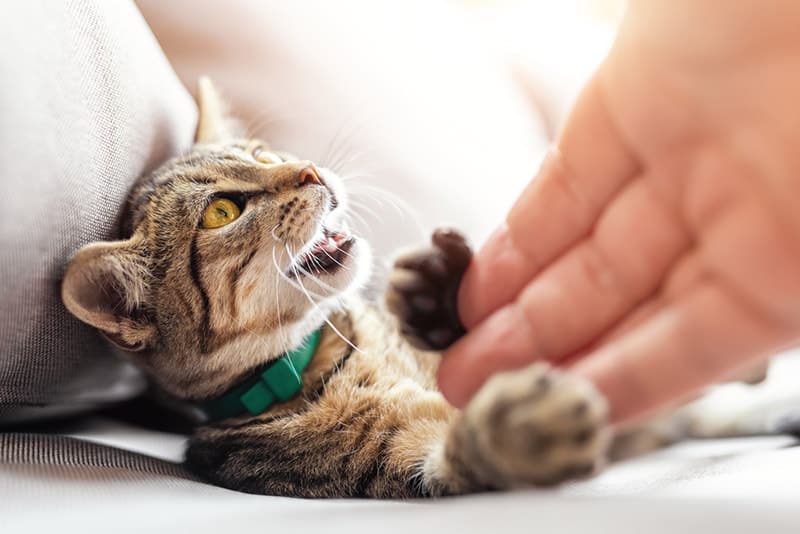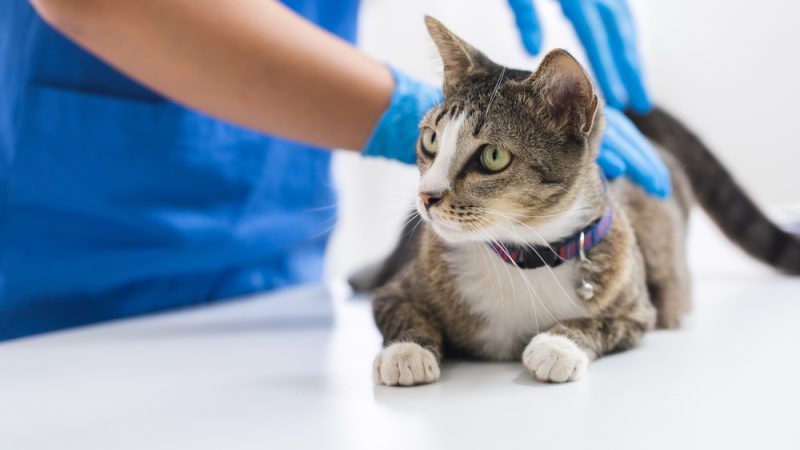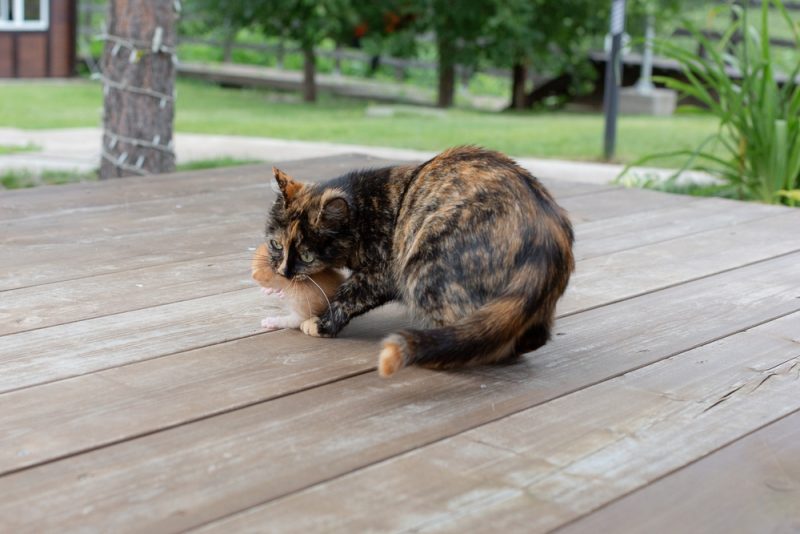Introducing two cats to each other can be a real challenge. Cats are very particular animals that tend to warm up to new animals very slowly and certainly in their own time. It can take days or weeks to acclimate a new cat to your home and to a point where they are at least partially accepted by the other animals in the house.
Male cats in particular can be somewhat territorial, so introducing two male cats to each other can be challenging. There are multiple things you can do to make introductions between cats go more smoothly, though.

The 7 Tips to Introduce Two Male Cats
1. Assess Your Cat
The key to successfully introducing two cats to each other with as little stress for both as possible is for you to be prepared for the arrival of the new cat. This starts by assessing your own cat.
If your cat doesn’t seem like the friendly type to other cats passing by your house or is overly attached to you (or another family member), then he may not be appreciative of a new cat coming into your home. Kittens that were fostered by humans and didn’t interact with other cats during the early stages of life (particularly during the first 8 weeks of life) are likely going to be less appreciative of other cats in their house.
As a general rule, cats are territorial and their immediate response to a strange cat in their territory is that of confronting an intruder. However, exceptions exist and cats can get along. However, with male cats in particular, there is an element of territorial aggression which is driven by their sex hormones. This is because an intact male will want to mate with as many female cats in his territory, and therefore may not tolerate other males in the area, especially if the other male is sexually mature as well.
Sex-driven aggression can be drastically reduced if your cat is neutered. In addition, even if your cat is neutered and seems relatively accepting of other cats, it’s recommended to ensure your cat is fully vaccinated before bringing in a new cat to your house.

2. Quarantine the New Cat
Not only can a new cat introduced to your pet’s space be a source of unwanted aggression and squabbles, but a new cat may also pose a health risk to your existing cat. For this reason, it is very important to quarantine your new cat for at least 2 weeks. During this time, your two cats should not share any bowls, toys, litter boxes, scratching posts, or other worldly possessions. It is also important that you thoroughly wash your hands before and after interacting with each cat. Changing your clothes between each interaction is also recommended, if possible.
Your new cat should be seen by a veterinarian before you bring them home, and once more after their quarantine period. If they get a clean bill of health from your veterinarian, you may then take steps towards an introduction.
3. Swap Scents
“Scent soakers” are items that are good at absorbing other scents. For cats, this can be blankets, beds, towels, and even toys. After your new cat is settled into the space and passes their quarantine, begin the introduction process by rubbing a “scent soaker” on each of your cats, and then rubbing it on the other cat. This transfers their scent to the other cat.
During this period, it’s a good idea to keep an eye on the behavior of each of your cats, particularly when they come close to the door or barrier that separates them. If you notice hissing or growling, you might have to go slower. In such an event, you might also want to consider pheromone diffusers.
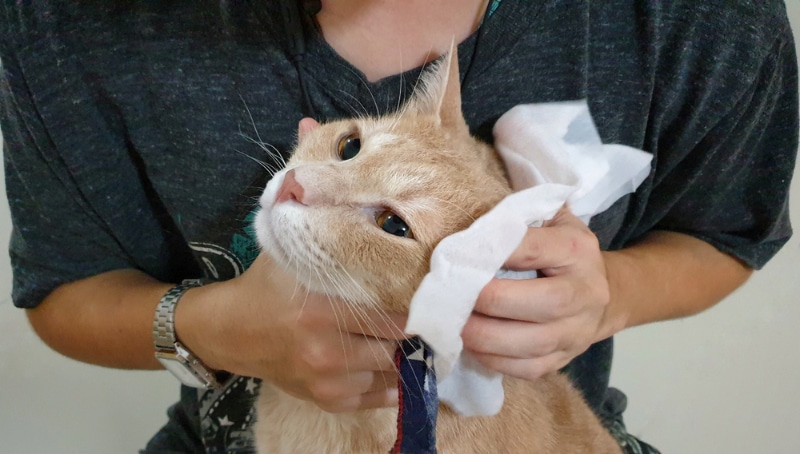
4. Create a Swap Day
One day, try inverting the space each cat occupies in your house. Allow your existing cat into the room of the new cat, and at the same time, allow the new cat to roam the rest of the house (ensure they don’t run into each other at this point). This will help each cat comfortably explore the space and associate themselves with the scent of the new cat as well.
5. Create Safe Eye Contact
Once your cats have had an opportunity to get used to each other’s smell, create eye contact between them. Ideally, you should have two people for this job so you can keep the cats well away from each other. The goal is simply for them to see the other cat, not to be introduced face to face.
The best way to do this is to have one cat in a carrier or crate or behind a screen and have the other cat be able to see the cat. The decision on which cat should be placed in the confined space depends largely on their personality; generally speaking, the more aggressive cat shouldn’t be allowed free reign to bother a placid and timid cat and should therefore be placed in a restricted environment so that the timid cat may approach him at his own pace.
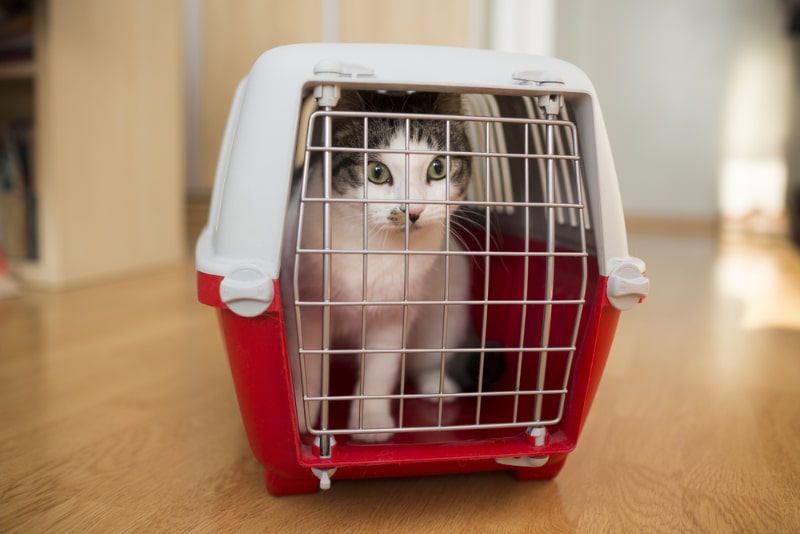
6. Allow Introductions
Once your cats seem comfortable with the smell and view of each other, you can allow them to get closer together. There is likely going to be an initial sense of unease between the two, and as long as they aren’t aggressively fighting, you should closely monitor their actions and allow them to interact with each other. If you do notice signs of aggression, you should separate your cats promptly.
7. Monitor Interactions
If your cats seem fine with each other, you can gradually increase the time they spend with each other, and over time if you notice no issues between them, you can assume that you’ve successfully introduced them to each other!


Are Male Cats More Difficult to Introduce?
Intact male cats may be a challenge to introduce due to their territoriality and hormones. Neutered male cats, on the other hand, are anecdotally considered to be among the most accepting of all cats.
Just because neutered males are often more laid back, there is no reason to create unnecessary risk and the chance of the two cats not getting along by skipping steps in the introduction process.

Conclusion
Patience is more than just a virtue; it’s a requirement when it comes to successfully introducing two male cats to each other. Cats can be slow to warm up to other cats, and intact males are often some of the most difficult cats to introduce to each other. It’s important to follow the correct steps and move slowly when introducing your cats. Otherwise, you may unintentionally create a stressful and unhappy environment for both cats that makes life more difficult for all of you.
Featured Image Credit: Wasuta23, Shutterstock










